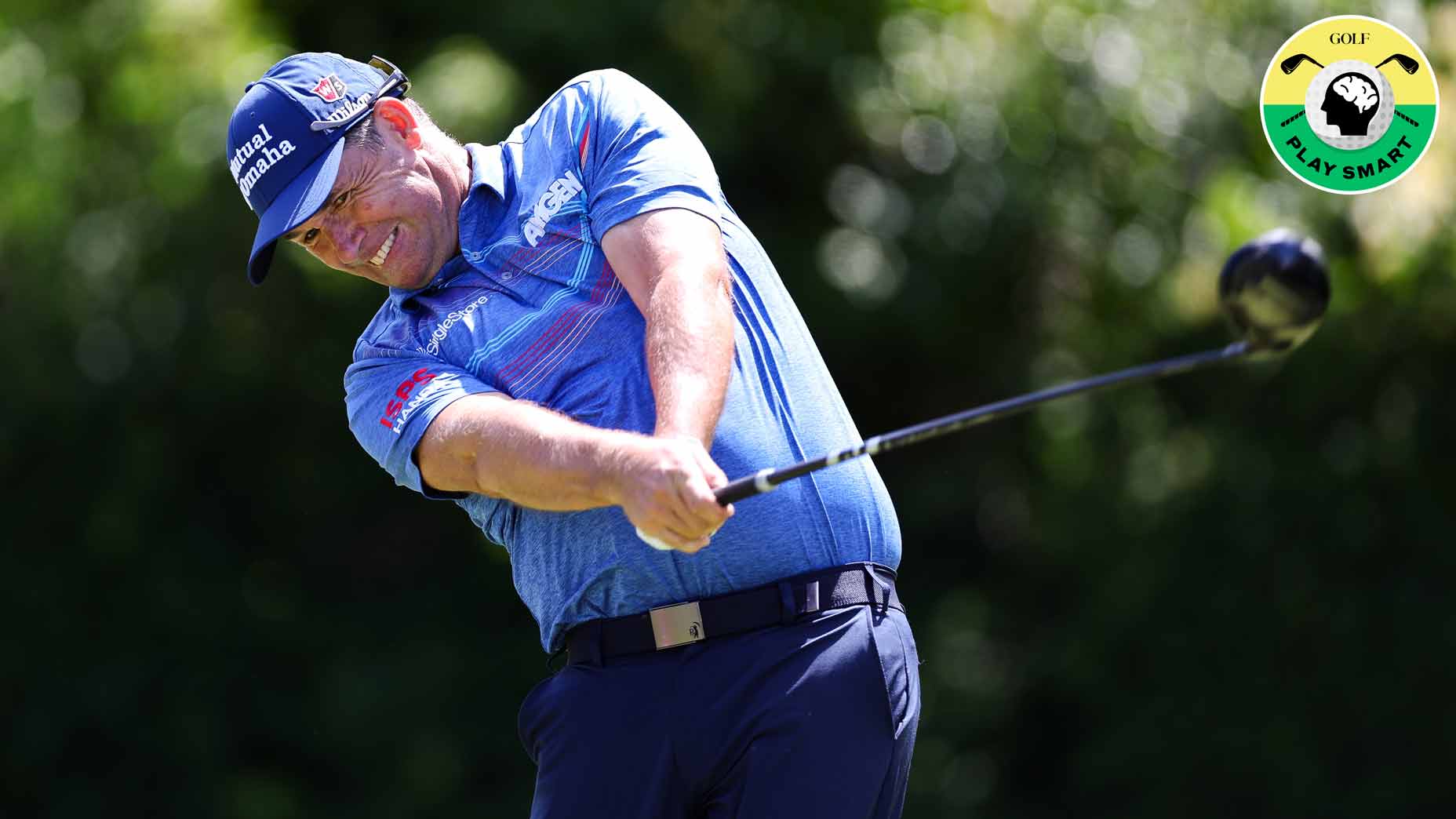Putting on sloped greens? Here’s the secret to make more putts

In today's Play Smart, PGA professional Glen Haynes provides helpful tips for golfers who are putting on sloped greens.
Getty Images
Welcome to Play Smart, a regular GOLF.com game-improvement column that will help you play smarter, better golf.
For any golfer looking to take the next step in their game, understanding how to putt on sloped greens will go a long way in accomplishing your goals. It’s simple: when a green is flat, it’s easier to putt on. Golfers can simply look at the distance to the cup and adjust their swing appropriately to get the right speed.
But when you’re faced with putting on sloped greens, things become much more challenging. Not only does a player need to look at the distance from ball to hole, but a slew of other factors come into play when reading the green — like where the break is, what the speed should be like and any consequences for leaving the shot either short or way past the hole.
Rather than fear putting on sloped greens, PGA professional Glen Haynes offers his favorite piece of advice in today’s Play Smart lesson.
How to putt on sloped greens
In the video below, Haynes doesn’t mince words when it comes to the challenges of putting on sloped greens, even saying that the greens at a course like Augusta National are “so severe, so fast, and the amount of break is so difficult to visualize that you’d basically feel like you’re playing mini golf or crazy golf.”
Take a deep breath, though, because there aren’t many courses out there that resemble Augusta National — at least not many that amateur golfers play.
Haynes goes on to remind players that it’s all about confidence, like most things in golf. With the proper preparation and guidance, every golfer can approach a difficult sloping green without worry.
Standing on the second green at Monash Country Club in Australia, Haynes demonstrates what he often sees from amateurs faced with putting on a green that stimps at 10.5.
“I have a putt here of around 12 feet with a left-to-right break. Most club golfers when faced with this putt would give it one cup, maybe two cups of break,” he said. “… Let’s watch this, I’m going to give it one foot of break.”
As Haynes hits his ball, he demonstrates how the ball breaks more than expected, gathering speed as it gets down the hill.
Haynes continues: “Elite golfers, the tour pros, are trying to hole these big, breaking putts. But they’re good enough that they can try to hole them, and that’s what I want you to do eventually. But to start, I want you to miss on the high side. I want you to give it a three-foot break, but let’s make sure that we’re high enough that the ball is trickling in.”
A common mistake Haynes sees with amateur players is that, maybe even subconsciously, they tend to think the ball is going straight, and then curving from the apex. However, he reminds viewers that’s not how it actually happens.
“On a breaking putt, on steep greens like this, as soon as this ball starts rolling, it’s swinging … even though the ball only travels two or three feet, it’s going to have a big impact on what happens when it gets to the hole.”
Finally, Haynes closes by reminding players to aim higher on the break. By doing this, golfers may still not make the first putt, but they’ll leave themselves in a much better position, finishing the hole with a closer putt to clean up.
“I guarantee you if you can break that habit of missing on the low side all the time, you’re going to find the speed control much easier. You’re going to leave yourself second putts that are a lot shorter, and you’re going to have fewer putts out on the golf course.”











